All You Need to Know About Making Tax Digital

What is Making Tax Digital
Making Tax Digital (MTD) is the Government’s initiative to make the UK tax system digitally advanced. In practice it means that taxpayers have to keep digital records and submit tax returns to HMRC digitally. The motivation behind MTD is making the tax system more efficient and effective and also easier for the taxpayer to submit correct tax returns and minimise errors.
Is Making Tax Digital Compulsory
MTD is compulsory for all qualifying businesses unless they fall into one of these exemptions:
- using digital tools to keep business records or submit your tax returns is not practical due to for example disability or location
- they are subject to an insolvency procedure
- businesses run entirely by practising members of a religious society or order whose beliefs prevent them from using electronic communications or keeping electronic records
If a business is just unfamiliar with the relevant software, introducing new software means additional costs or is already using a computer for other things, it cannot be exempt from MTD.
Please see the deadlines section below to see qualifying businesses.
How Do You Comply with Making Tax Digital
What do you need to do for Making Tax Digital? To comply with MTD, businesses are required to keep digital records as well as submit their tax returns via software. Why not let businesses do paper returns or type the numbers for tax returns directly into HMRC account? Typing your numbers from, for example, a spreadsheet poses a risk of submitting wrong numbers and paying wrong amounts of tax. Numbers transferred manually can also be easily manipulated and the risk of fraud increases.
Making Tax Digital Deadlines
MTD has been introduced in stages and at the moment it’s compulsory for businesses registered for VAT above the VAT registration threshold, currently £90,000. This was introduced in April 2019. If your business falls within this category, you have to submit your VAT returns digitally. Not complying with MTD rules can cost businesses even £1,500 in penalties.
Deadlines for other businesses to sign up for MTD and comply with the new rules are following:
- From April 2022– VAT-registered businesses with taxable turnover below the VAT registration threshold
- From April 2026– landlords and all self-employed people with total annual income above £50,000 will have to go digital
- From April 2027– landlords and all self-employed people with total annual income of more than £30,000 but not exceeding £50,000 will have to sign up for Making Tax Digital
- From April 2028– landlords and all self-employed people with total annual income of £20,000 will be mandated to join MTD IT
- MTD for partnerships not confirmed yet
- MTD applying to limited companies for corporation tax still to be confirmed.
Making Tax Digital Software
To comply with MTD rules businesses are required to introduce compatible software that is able to keep digital records and communicate with HMRC by sending tax returns and receiving information from HMRC.
But what if you use spreadsheets for recording your business transactions? Can Excel be used for Making Tax Digital? The answer is yes, it can. How does this work in practice? So you enter the details into your spreadsheet as normal but when submitting your tax return, you have to have a digital link between your spreadsheet and HMRC. This is done via bridging software that links these two together. You can’t simply log into your HMRC account and type the numbers for the tax return. You need to send/import your spreadsheet into software that can later communicate with HMRC by submitting the tax return to them without any manual intervention.
HMRC-recognised software that can preserve digital records and file returns for you and is recommended by us is Xero.
Want someone to help you comply with MTD? Contact our friendly specialists from Oxford bookkeeping office.

Your Accountant in Oxford
Oxford Office
Joanna Bookkeeping
The Wheelhouse Angel Court
First Floor, Angel Court
81 St Clements St
Oxford
OX4 1AW
Connect
joanna@joannabookkeeping.co.uk
01865 591952





